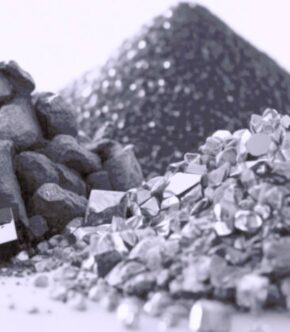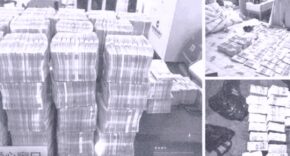China has unveiled its toughest rare-earth export rules yet, a sweeping control that reaches deep into global supply chains. Starting December 1, 2025, companies that sell products containing Chinese-origin rare earths will need Beijing’s permission if those inputs make up 0.1 percent or more of the product’s value. The policy does not stop at raw oxides. It extends to magnets, chips, and finished devices that embed even trace Chinese content. China’s Ministry of Commerce says the measures are meant to keep materials from flowing into military uses and warned that exports to overseas military suppliers “will not be approved.”
The move arrives alongside a second step. Beginning November 8, China will also restrict exports of many types of equipment needed to produce electric-vehicle batteries. Together, these actions tighten China’s control over critical inputs for semiconductors, EVs, and advanced manufacturing at the very moment the world is racing to build more of all three.
Analysts say the scope is extraordinary, especially because China produces roughly 90 percent of the world’s rare-earth materials and dominates the value chain. As Jimmy Goodrich of the University of California Institute of Global Conflict and Cooperation put it, “China is playing hardball.” He warned the new rules “could position Beijing to have complete control of the global A.I. and modern electronics supply chain.” Another expert called the threshold itself unworkable for compliance. “It’s impossible to know whether or not a tech product has 0.1 percent Chinese rare earth content,” Goodrich said.
Why This Hits So Hard
Rare earths make modern technology run. They sit inside high-performance magnets for motors and turbines, stabilize chip components at high temperatures, and appear in precision guidance, radar, and propulsion systems. China refines 99 percent of the world’s dysprosium, a heat-tolerant rare earth used in chips, and refines all of the world’s samarium used in magnets for advanced weapons platforms. One refinery in Wuxi near Shanghai produces the entire world’s supply of ultrapure dysprosium; it is controlled by Shenghe Resources, which took an 86 percent stake on April 1 from Canada’s Neo Performance Materials.
Dean Ball, formerly an AI policy adviser at the White House, said these inputs are foundational. “These rare-earth minerals and the ability to refine them are just the basis of modern civilization.” He warned that an aggressive implementation “could cause a U.S. recession” given the centrality of AI-driven capital spending. Dmitri Alperovitch of the Silverado Policy Accelerator called the move “an economic equivalent of nuclear war—an intent to destroy the American AI industry.” He also argued it is a “blackmail tactic” ahead of a possible meeting between President Trump and Xi Jinping in South Korea.
European officials are alarmed. EU spokesman Olof Gill said the commission was “concerned” and expects China to be “a reliable partner” that ensures “stable, predictable access to critical raw materials.”
A Lever Before Talks
Beijing’s timing is not accidental. Vice Premier He Lifeng recently pressed U.S. negotiators in Madrid to remove tariffs and export controls. The new rule arrives as President Trump and Xi are expected to meet soon, and follows months in which China has dangled supply and then tightened it again. A White House official said the rules were announced without notice and look like an effort to control global technology supply chains. President Trump told his cabinet that Treasury Secretary Scott Bessent and Commerce Secretary Howard Lutnick would craft a response. “We import from China massive amounts and maybe we will have to stop doing that,” he said.
This fits a pattern. China restricted rare earth exports in April, contributing to a June truce. Yet licenses later moved slowly or not at all, and shortages persisted. As one analysis summarized, China’s actions have become “a potent instrument of economic and geopolitical leverage.”
The New Rule’s Teeth: Military and Chips
Beijing’s latest measures explicitly target military-linked buyers and the technologies that enable advanced computing. Licenses tied to foreign militaries will be denied. Applications related to sub-14-nanometer semiconductors, next-generation memory chips, and semiconductor manufacturing or testing equipment will face case-by-case review. Companies will be pushed to disclose end users, technical specifications, and product uses, giving Chinese authorities broad discretion to delay or reject shipments.
For defense programs, the stakes are obvious. A Virginia-class submarine uses more than 9,000 pounds of rare-earth materials. An F-35 contains about 900 pounds. Lockheed Martin relies on samarium-cobalt magnets that hold performance under intense heat and stress, and samarium refining is entirely inside China. The Ministry of Commerce underlined that requests “to use rare earths for military purposes” will be rejected.
The effects are already spilling into factory floors. Ford halted production of its Explorer SUV for a week in May because of a magnet shortage. Lisa Drake, who oversees industrial planning for Ford’s EVs, described operations as “hand to mouth,” adding, “It’s the normal supply-chain scrambling that you have to do.” Importers report redesigning products to use weaker magnets and air-freighting components at high cost just to keep lines running. According to China’s customs data, rare-earth magnet exports to the United States fell 93 percent in May year over year.
Companies also describe an approval maze. Neha Mukherjee of Benchmark Mineral Intelligence said, “Yes, the export restrictions have been paused on paper. However, ground reality is completely different.” A representative for one importer said there are “thousands of applications” and called the system “slow and burdensome.” Applicants who try to protect intellectual property by skipping sensitive questions often see their requests bounced back, each restart adding about 45 days. Even when licenses arrive, they expire after six months, preventing stockpiling and long-term planning.
China’s Control
China controls the rare-earth ecosystem from mine to magnet. It accounts for roughly 70 percent of global mining, 90 percent of separation and processing, and 93 percent of magnet manufacturing. Over the last year, authorities required exporters to trace in detail how shipments are used in Western supply chains. Inspectors this summer barred factories from transferring magnet-making equipment out of China, and many technicians have been required to surrender passports.
This is not new behavior. In 2010, Beijing imposed a two-month embargo on rare earth exports to Japan during a diplomatic crisis, and in recent years has curbed exports of other critical materials such as gallium, graphite, and tungsten. A 2024 U.S. Government Accountability Office report warned that critical materials “are overwhelmingly mined and processed abroad,” leaving the United States dependent on foreign suppliers, particularly China.
Why Now
The new restrictions mirror a tool Washington has used for semiconductors. For the first time, China is applying a foreign-direct-product-rule-style concept to rare earths, asserting jurisdiction over items made abroad if they incorporate Chinese materials or technology. That flips the script on U.S. long-arm controls and places chipmakers and equipment vendors in Taiwan, South Korea, Japan, Europe, and the United States under Beijing’s licensing umbrella when Chinese inputs are present.
The policy also bars Chinese nationals from supporting overseas projects in rare-earth exploration, extraction, processing, or magnet making without prior authorization, stemming the outward flow of skills and know-how. It widens the choke point at the source and at the frontier of technology diffusion.
Two weeks after a U.S.-China agreement promised relief, companies still could not get the supplies they needed. President Trump had assured that “FULL MAGNETS, AND ANY NECESSARY RARE EARTHS, WILL BE SUPPLIED, UP FRONT, BY CHINA,” but license delays and rejections continued. European and Japanese manufacturers have paused lines. Germany’s main industry association warned that licensing cannot become political pressure by other means. The gap between public promises and “ground reality,” as Mukherjee put it, shows how much leverage Beijing retains.
This year’s squeeze does not stand alone. In February 2025 China tightened exports of five other critical metals used across defense, clean energy, and electronics: tungsten, tellurium, bismuth, molybdenum, and indium. Analysts expected price spikes and renewed urgency to diversify supply. The lesson was clear. Each wave of controls re-prices risk, rattles inventories, and forces manufacturers to chase non-Chinese sources that are still too small to fill the gap.
The United States is rebuilding capacity from a long way behind. Noveon Magnetics is the only U.S. producer of rare-earth magnets. This week, Noveon and Lynas Rare Earths announced a memorandum of understanding to build a scalable domestic magnet supply chain. In July 2025, the Department of War invested $400 million in MP Materials, becoming its largest shareholder, and set a 10-year price floor of $110 per kilogram for NdPr to keep production viable amid Chinese overcapacity. The Office of Strategic Capital extended a $150 million loan to expand heavy rare-earth separation at Mountain Pass, and the government signed a 10-year offtake agreement for 100 percent of the output from MP’s planned “10X Facility” for magnets.
Those steps matter, but the ramp will take years. MP Materials targets about 1,000 tons of magnets annually, while China produced roughly 300,000 tons last year. As former Molycorp CEO Mark Smith cautioned, “Western nations will take years to develop enough rare earth processing capacity to limit China’s dominance.”
Australia’s Lynas is expanding separation capacity in Texas and continues production in Malaysia. Its new U.S. facility is expected online in 2026, with some heavy rare-earth output, though it has not committed to military-grade magnet manufacturing. Japan is believed to have larger stockpiles, and South Korea brought in dysprosium early this year. These buffers can soften shocks but cannot replace China’s scale.
Semiconductors are the backbone of AI infrastructure, and AI-related sales are now a primary engine of global trade growth. If China enforces the 0.1 percent rule strictly, the licensing and traceability burden could slow server and chip deliveries worldwide. A former U.S. official warned that defense inventories are thinning as arms flow to allies, while rare-earth replenishment lags. Joseph Hoefer, chief AI officer at Monument Advocacy, summarized the exposure: “This is a real vulnerability for U.S. AI companies.”











